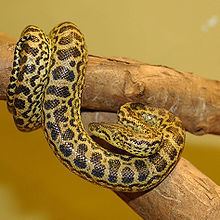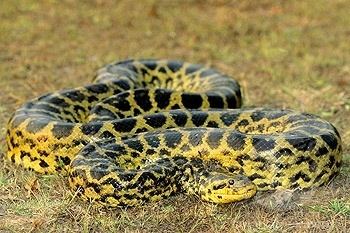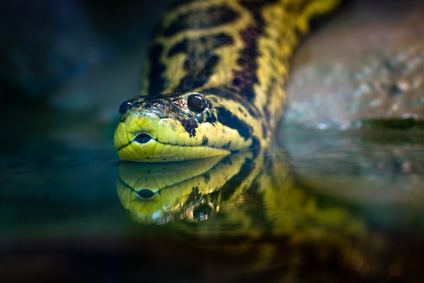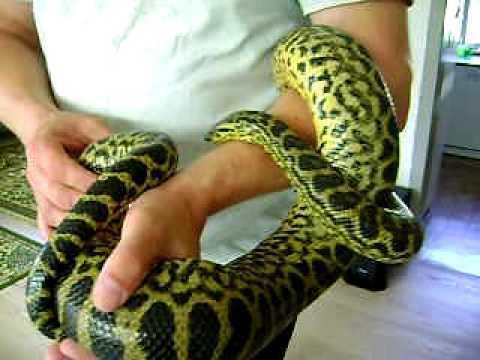Scientific name Eunectes notaeus Higher classification Anaconda | Phylum Chordata Suborder Serpentes Genus Eunectes Rank Species | |
 | ||
Did you know The yellow anaconda prefers mostly aquatic habitats, these include marshlands, swamps or the banks of slow-moving rivers and streams, but they are also found in forests searching for larger prey. Similar Snake, Anaconda, Reptile, Green anaconda, Boas | ||
Watch brazilian men find giant snake in river giant yellow anaconda biggest anaconda ever found
The yellow anaconda (scientific name Eunectes notaeus, also known as the Paraguayan anaconda) is a boa species endemic to South America. It is one of the largest snakes in the world, but is not as large as its close relative, the green anaconda. Like all boas and pythons, it is non-venomous and kills its prey by constriction. The yellow anaconda is found in southern regions of South America, including Paraguay, southern Brazil, northeastern Argentina, and Bolivia. No subspecies are currently recognized.
Contents
- Watch brazilian men find giant snake in river giant yellow anaconda biggest anaconda ever found
- Etymology
- Description
- Habitat
- Feeding
- Captivity
- References

Etymology

The genus name Eunectes derives from Greek and means "good swimmer"; the Neo-Latin specific name notaeus derives from Greek νωταίος/nōtaios (poetic form of Greek νωτιαίος/nōtiaios), here meaning “dorsal”. In distinguishing his new species Eunectes notaeus from Eunectes murinus, Edward Drinker Cope stated, "Dorsal scales are larger and in fewer rows."
Description

Adults are not as large as the green anaconda, E. murinus, but nevertheless grow to an average of 3.3 to 4.4 m (10.8 to 14.4 ft) in total length. They commonly weigh 25 to 35 kg (55 to 77 lb), though large specimens can weigh 40 to 55 kg (88 to 121 lb) or even more. The maximum size can certainly be larger, although confusion with its larger cousin may complicate matters. Female yellow anacondas have reportedly been measured up to 4.6 m (15.1 ft). Females are generally larger than males.
The color pattern consists of a yellow, golden-tan or greenish-yellow ground color overlaid with a series of black or dark brown saddles, blotches, spots and streaks.
Habitat
This species prefers mostly aquatic habitats, including swamps, marshes, and brush-covered banks of slow-moving rivers and streams. They can be also observed in forests and can prey on relatively large game, such as brocket deer or peccaries.
Feeding
These snakes were studied in regularly flooded areas in the Pantanal region of southwestern Brazil. The data collected were directly observed from predatory instances, analysis and examination of gut and waste contents, and affirmations by local residents and other researchers. These studies indicate the species is a generalist feeder. The prey list analyzed and other evidence suggest E. notaeus employs both "ambush predation" and "wide-foraging" strategies. The snakes forage predominately in open, flooded habitats, in relatively shallow water; most predation instances occur from June to November, when flooded areas have noticeably dried out, with wading birds being the most common prey. They have also been known to prey on fish, turtles, small-sized caimans, lizards, birds' eggs, small mammals and fish carrion. The prey to predator weight ratio is often much higher than those known for other types of Boidae.
Captivity
As captives, they have a reputation for being unpredictable, and are somewhat dangerous to humans. However, humans are anaconda's main predators; killing them for their skin.
In the United States, their importation and their transportation and sale across state lines were banned in 2012 to try to prevent the yellow anaconda from becoming an invasive species in areas such as the Florida Everglades.
